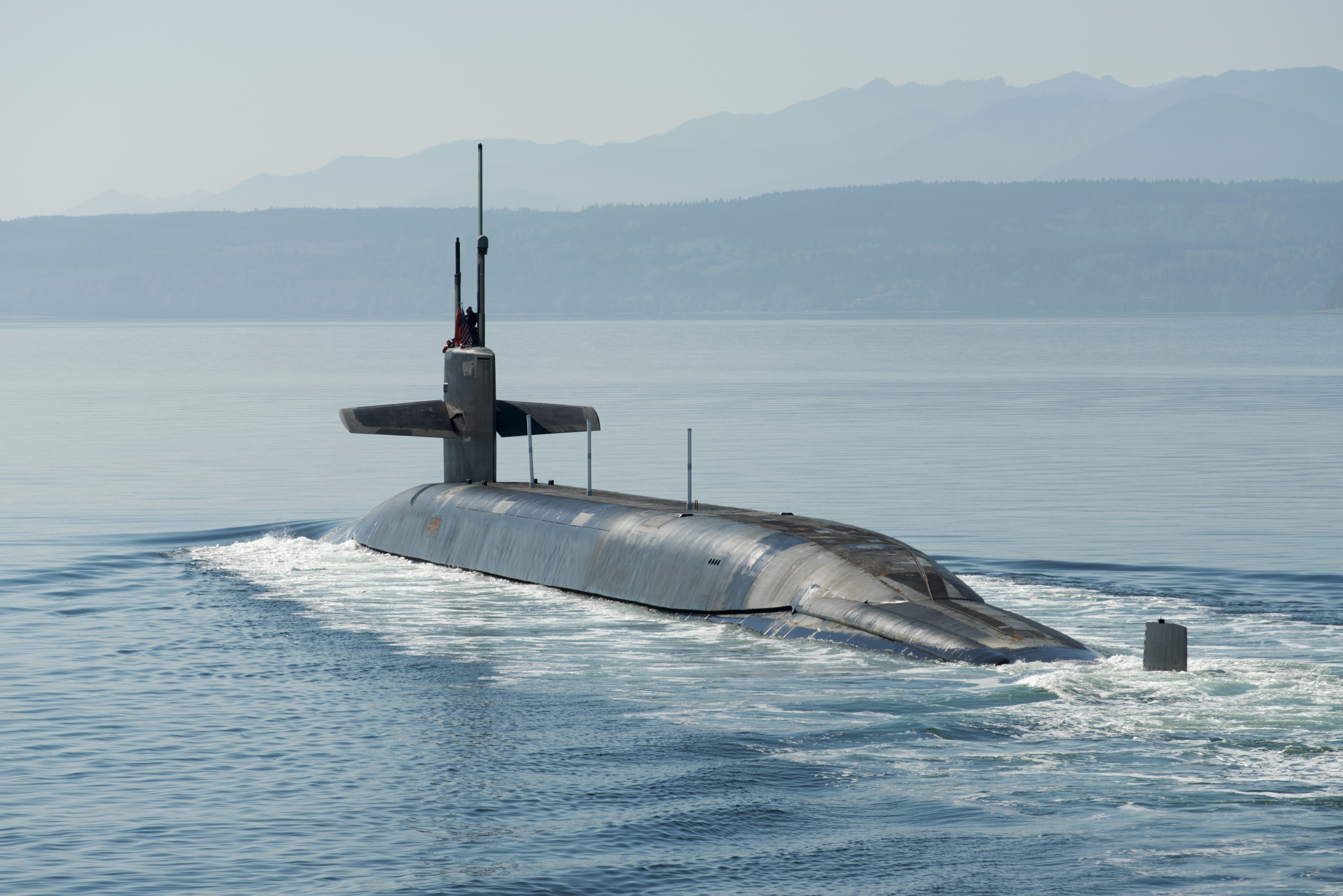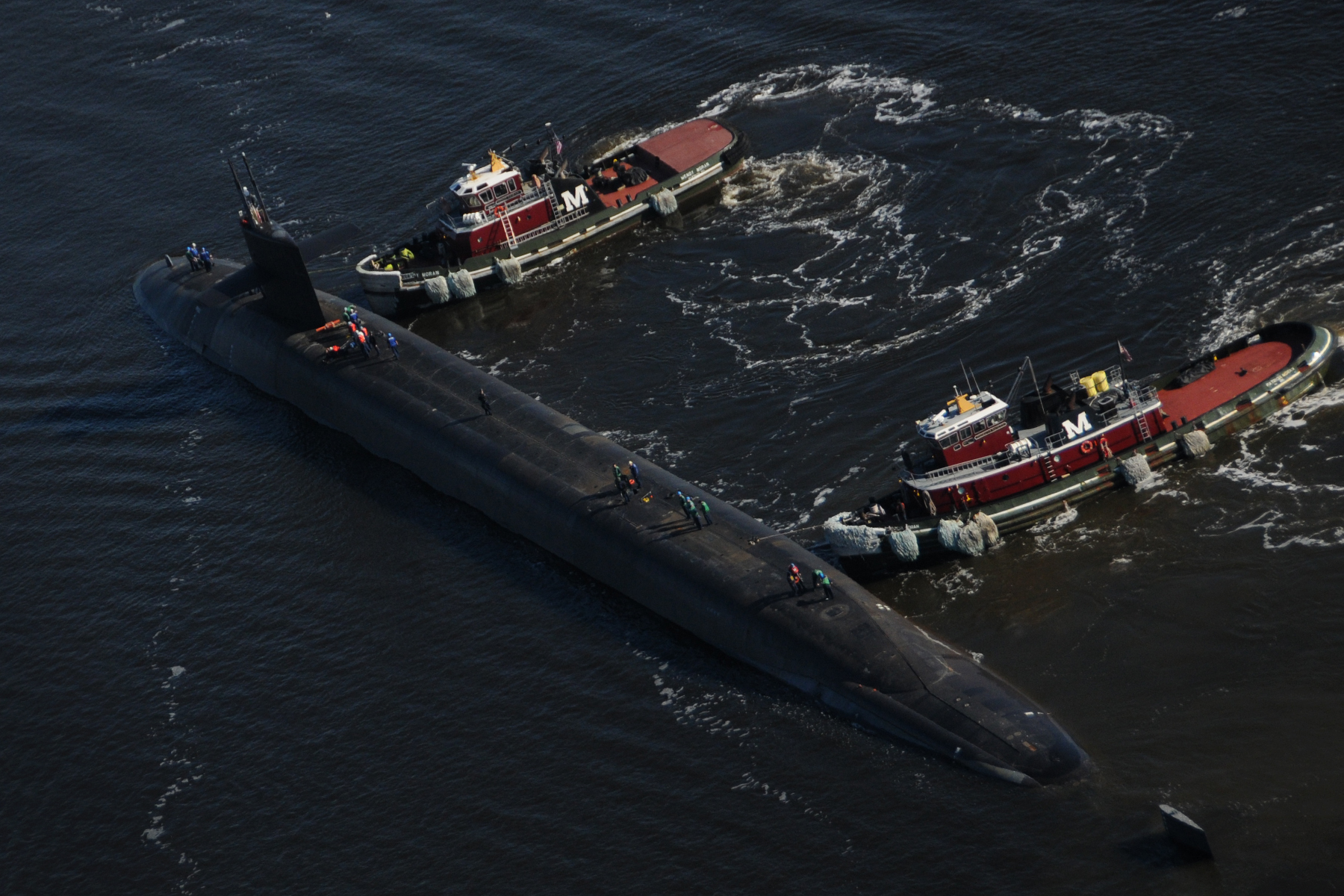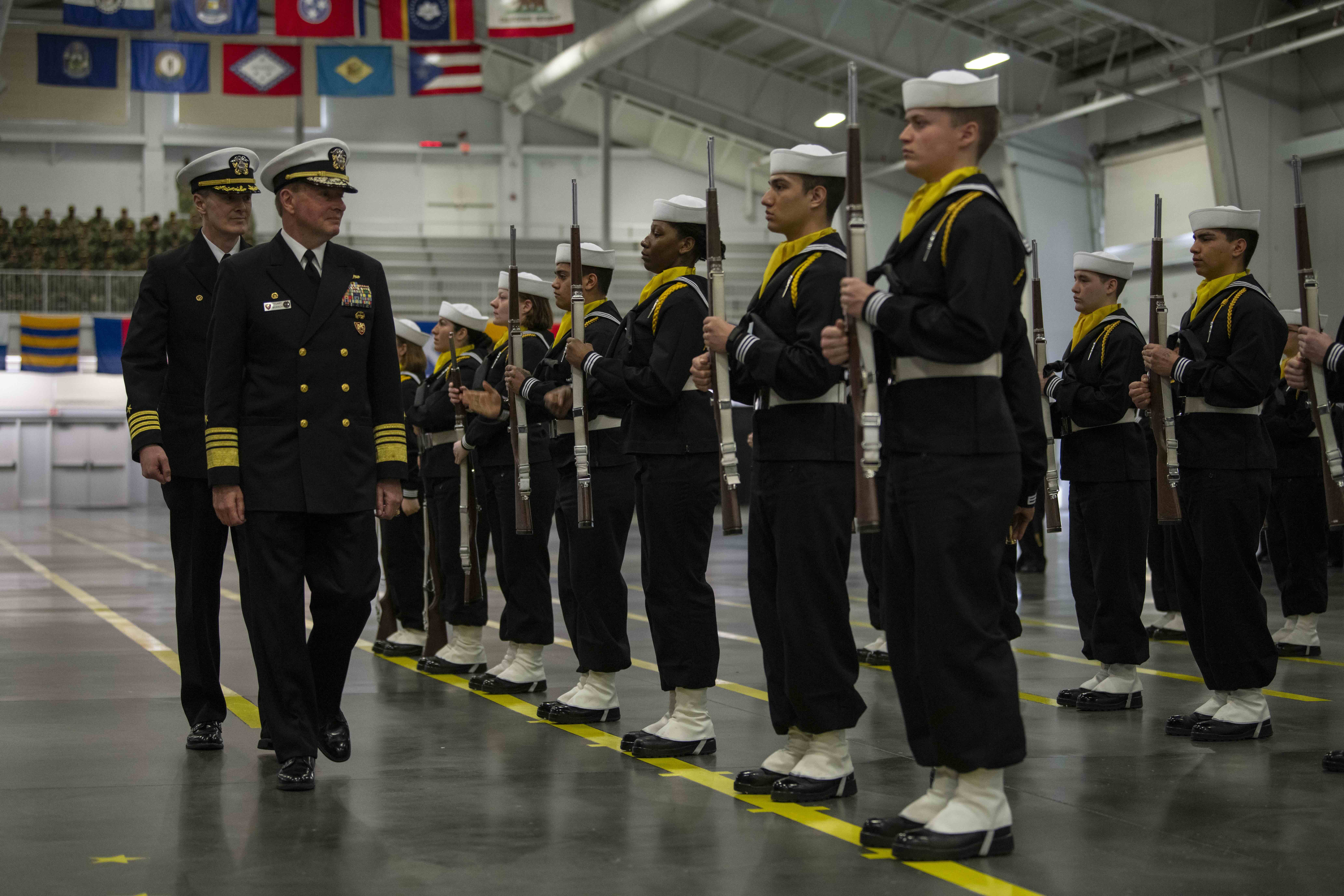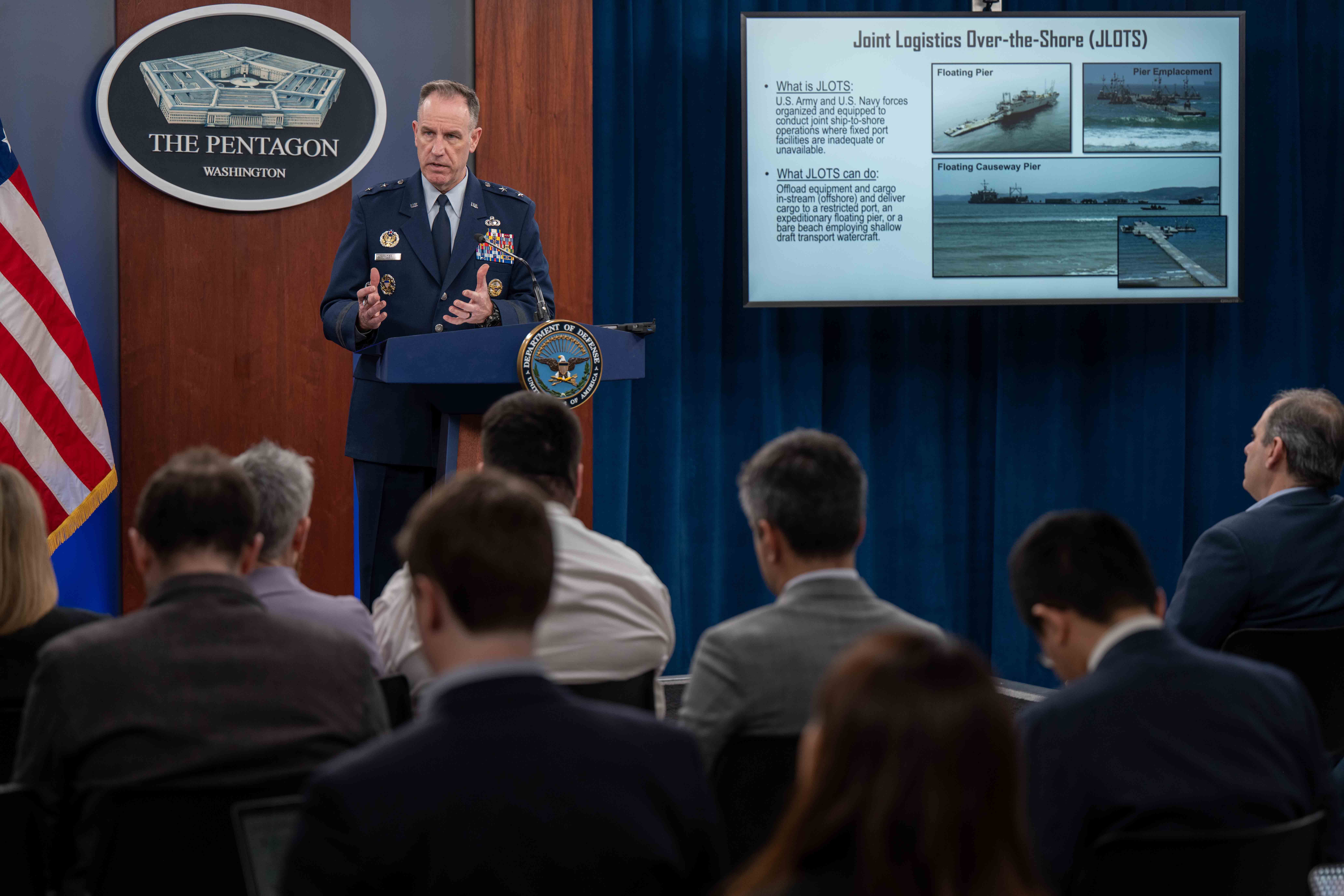
The Navy’s imperative to provide “uninterrupted strategic deterrence” with its ballistic missile submarines requires it meets two goals: development of the new boats must stay on schedule, and the old boats must make it to the end of their expected service lives.
The latter isn’t easy – the Navy is counting on the Ohio-class ballistic missile submarines (SSBNs) to stick around for 42 years each, something that’s never been done. The longest-serving American submarine, the boomer USS Kamehameha (SSBN-642), retired in 2002 after 36 and a half years of service. USS Ohio (SSGN-726) has been around for just over 34 years and still needs to make it another eight – a mandate that keeps Capt. Scott Pappano, his team at Naval Sea Systems Command (NAVSEA), and other offices throughout the Navy busy.
Pappano, the program manager for strategic and attack submarines at NAVSEA, told USNI News in a Jan. 28 interview that “we have a very good, well designed ship that was designed for a 30-year service life.” In 1995 the Navy tasked sub builder General Dynamics Electric Boat with analyzing what it would take to get the boats to 42 years of life, and after a few additional trade studies the NAVSEA decided in 1998 to pursue the life extension.
Many of the ideas and challenges – both in the hull, mechanical and electrical (HM&E) side and the non-propulsion electronics systems (NPES) side – that were discussed 20 years ago are now coming to a head, Pappano said.
It was clear going into the life extension effort that the electronics would need to be updated. More recently, however, the Navy realized that the analog data processing and tactical systems the SSBNs were using were not only harder to maintain and operate, but would also be unsustainable past Fiscal Year 2018 due to the ability to get spare parts and other factors.
Pappano said the Navy decided to bring the SSBNs into the Submarine Warfare Federated Tactical Systems (SWFTS) program, an open architecture electronics system with regular hardware and software updates. The attack submarines and the guided missile subs – four SSBNs, including Ohio, that were converted into SSGNs to deploy conventional weapons – already used SWTFS. USS Rhode Island (SSBN-740) will be the first boomer to get the SWFTS systems.
Rhode Island went into the Norfolk Naval Shipyard last month for its mid-life Engineered Refueling Overhaul, and that 27-month period will be filled with both planned work from the class maintenance plan as well as initiatives meant to keep the boat ready and relevant through the second half of its 42 years.
The upgrade to SWFTS equipment will be “easier logistically, easier to maintain” for the fleet and the operators, and “it also brings great capability to the ship as well, essentially gives it an attack submarine tactical systems suite,” Pappano said. Major sections of the control room, computer stations, sonars and more will be ripped out of the sub while in dock for the refueling, and new computer servers and other equipment will be installed. This also gives the Navy the opportunity to install the Consolidated Afloat Networks and Enterprise Services (CANES) – one of the major modernization efforts the Navy is trying to schedule for all classes of ships in the fleet, which will also keep the SSBNs relevant and easier to maintain and upgrade through the end of their service lives.
Rhode Island, as the fourth youngest SSBN, will get the SWFTS and CANES upgrades during its midlife refueling. Older boats may get these upgrades during the second engineering refit period (ERP), which comes at 32 years of service, or the work may be scheduled at another time when the public shipyards can handle the work and the fleet commanders don’t need the sub.

USS Henry M. Jackson (SSBN-730) will be the first to go into the 32-year-mark ERP later this year – another reminder of the importance to get the new class of ballistic missile submarines designed, built and ready to deploy on time.
“We’ve never operated a submarine up to 42 years before,” Pappano said, and though he’s confident the boomers will make it to 42 years, there is no room for error when it comes to having the lead ship in the new class of SSBNs ready to deploy when Henry M. Jackson decommissions.
“We don’t have the wiggle room to go beyond [42 years] right now. That’s my position and I’m sticking to it,” Pappano said.
On the HM&E side of the house, some of the work being done today was predicted by early analysis – replacing piping in the steam distilling plants, replacing analog computers and preserving the hull, for example, Pappano said. The Navy is monitoring the Ohio-class boats reassessing the plan to preserve them every few years “to make sure we’ve investing modernization dollars in the right systems.”
Helping this effort is the converted SSGNs.
“SSGNs have essentially become canaries in the coal mine for us,” Pappano said. These four boats are used in the littorals rather than open ocean, run at higher speeds and surface and dive more frequently than their SSBN counterparts, creating “accelerated aging of the platform.”
“We can learn a couple things from the SSGN operations hopefully ahead of the SSBN,” he said, noting that the SSGNs have already seen wear and tear in the sanitary piping systems and the trim and drain system used to maintain neutral buoyancy – indicating that repairs or replacements for these systems may be in the SSBNs’ future.
Pappano said the Navy has a good handle on the work they know they must accomplish to keep the SSBNs sailing, but as the boats near the end of their 42 years “some of those unknown unknowns may get uncovered.”
“My biggest concern is what I don’t know about the hull that hasn’t come up and bit me yet,” he said. He noted the Navy has prioritized the Ohio-class maintenance and modernization efforts due to its strategic importance and that he hopes that funding remains in place throughout the budget process.





